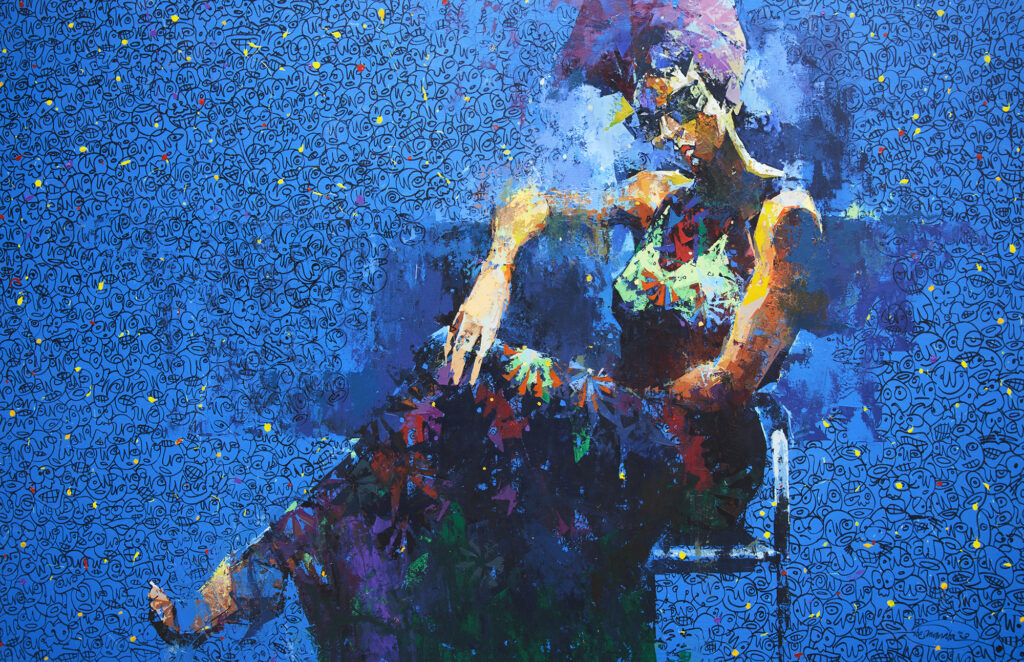
Credit: Amidst The Noise (4) © Ibe Ananaba 2020
Black fashion and art taste like Jollof rice and plantain; they are intrinsically linked. In Aba, the bustling commercial hub of Abia State, Nigeria, where I grew up, the two merge seamlessly into a vibrant display of creativity. Often referred to as the “Japan of Africa”, Aba is home to a thriving fashion industry beyond commerce; it is a living testament to the ingenuity and innovation of its people. As an artist rooted in this creative culture, I see African fashion as an art form representing culture and identity.
Growing up alongside my childhood friend Okey Onugha, whose family owned the fabric business- Veroby, we were surrounded by incredibly skilled tailors and footwear makers, who we respectfully viewed as artists. Their ability to transform fabrics and leather into couture art pieces people wear, with each of their stitches narrating stories of aspiration and resilience, is truly outstanding. This tradition, built long before my childhood and adolescence, made the famous phrase, ‘Aba-made’, a bragging right, inspiring my fashion illustration journey.
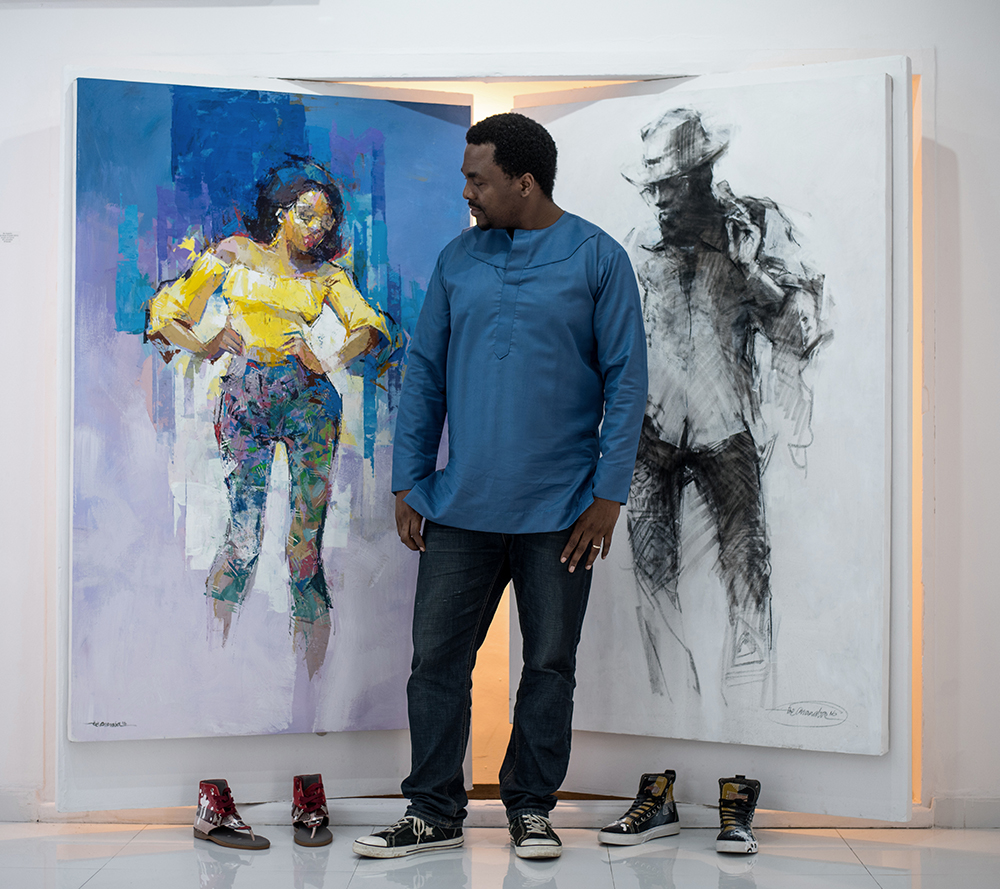
Credit: © Emeka Okereke 2016
Black fashion transcends clothing, permeating all facets of contemporary African culture. By turning the streets into larger runways, Afro-centric fashion serves as a canvas for African creativity, transforming everyday life, from social gatherings to movies, music videos, magazines, and advertising materials. Its influence surpasses Nigeria’s art scene, as exemplified by Fela Kuti, a global icon whose fashion style fuses traditional motifs and vibrant colours, or Nike Davies-Ogundaye’s impactful bold Àdìrẹ work, both symbolizing empowerment, liberation, cultural identity and self-expression. Notable artists like Yusuf Grillo, Hassan Hajjaj, Njideka Akunyili-Crosby, Yinka Shonibare, Serge Attukwei Clottey, Mary Sibande, Cyrus Kabiru, etc., incorporate fashion in different mediums to explore identity and cultural heritage in their works. All those mentioned above, including the IAMISIGO brand and others, glorify the transformative power of art within fashion. Additionally, SÉLÉNSÉ, my solo exhibition in 2016 at Rele Gallery, Lagos, highlights fashion’s role as a marker of contemporary Nigerian identity.
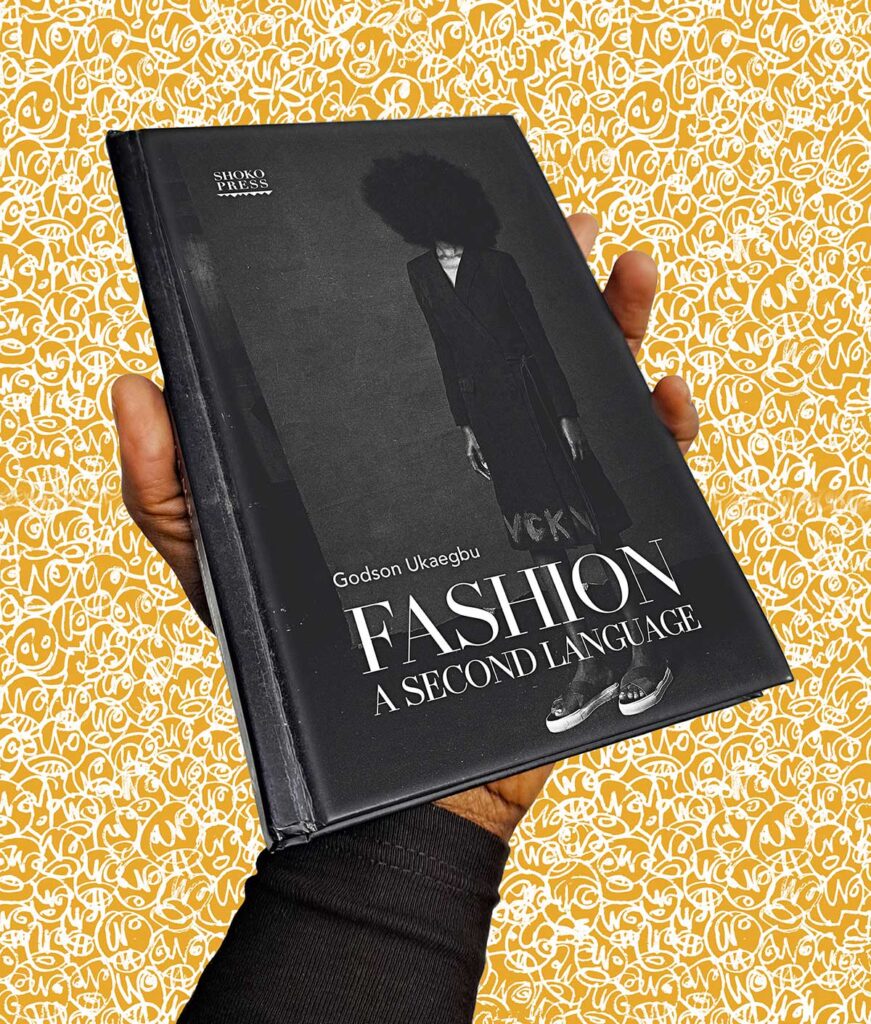
Credit: © Ibe Ananaba
The African fashion industry speaks volumes. Events like the ‘Africa Fashion Exhibition‘ at V&A Museum, London, showcase Africa’s rich cultural heritage through textiles and designs. Beyond this, fashion becomes a storytelling medium in documenting our collective journey as a people, as rightly inferred in ‘Fashion: A Second Language‘, authored by Godson Ukaegbu. Black fashion transcends borders as a visual language conveying our global indisputable identity.
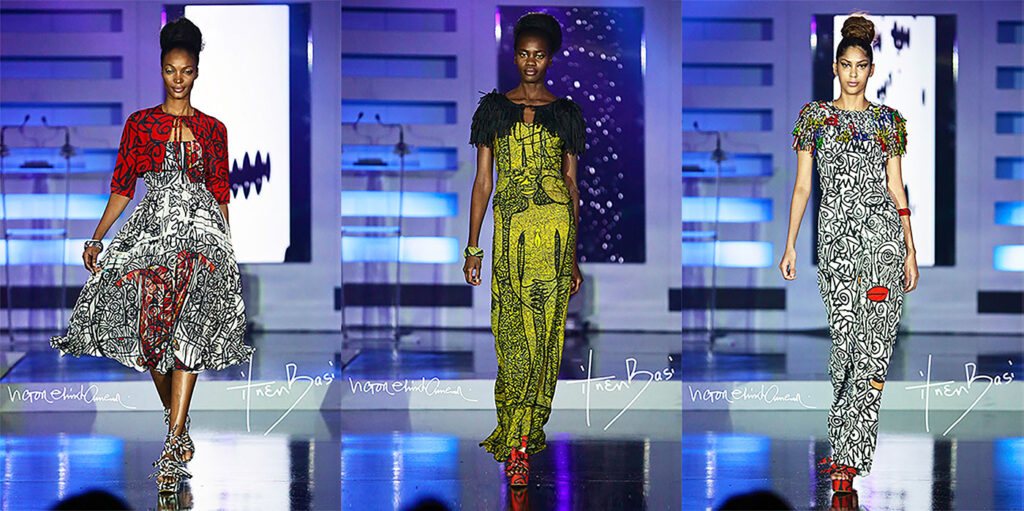
Credit: © Victor Ehikhamenor and Ituen Basi
The economic impact of the black fashion industry is substantial. Prominent brands like Lisa Folawiyo, Atafo, Tongoro, Thebe Magugu, Lemlem, Amine Bendriouich, etc., collectively contribute financially, elevating the African aesthetic globally. According to the National Bureau of Statistics, the Nigerian fashion industry has grown at an average of 17% since 2010. The textile, apparel, and footwear sector has significantly contributed to this growth. In corroboration, Statista projects that The Fashion market in Nigeria will grow by 10.03% between 2023 and 2027, resulting in a market volume of US$1.92 billion in 2027.
African fashion and art collaborations rock! Examples like Ituen Bassey and Victor Ehikhamenor’s ‘Ekemini‘ collaborative project featured in Vogue Italia in 2015 or Amoako Boafo and Kim Jones’ collaborations for the Dior men’s collection in 2021, celebrating blackness, demonstrate fashion’s bold statements amplifying African voices. These partnerships diversify our creative expressions, further blurring the lines between art and fashion.
With its continental solid influence, remarkable shows in different regions collectively project African culture globally, including Lagos Fashion Week, Cape Town Fashion Week, Swahili Fashion Week, Morocco Fashion Week, etc. These events foster cross-cultural exchanges, highlighting the immense creativity the continent is blessed with.
African fashion and art have a multifaceted global impact, engaging diverse audiences to feel the pulse of black excellence. Ruth Carter’s afro-futuristic work in Black Panther illustrates cultural pride, portraying how deconstructing stereotypes creates a positively influential narrative in projecting Africa’s vibrant heritage. This bridges cultural gaps and also attracts foreign investment to the continent.
Black fashion is a vibe! – an undeniable solid art form that portrays a dynamic narrative of African culture. It embodies identity, and innovatively preserves our heritage. Weaving fashion and art to create powerful expressions, we bask in black euphoria that resonates with Motherland. African fashion and art ultimately serve as cultural bridges connecting our soul with the global audience to deepen the black excellence narrative.
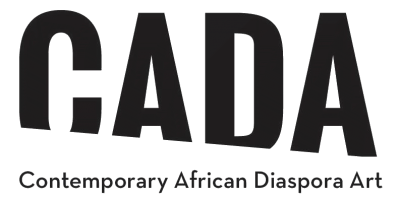
Leave A Comment